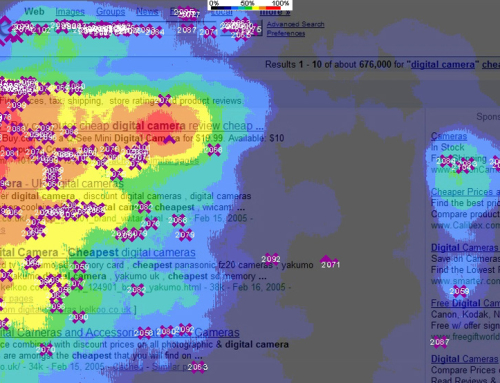In the past three decades, the world has experienced the arrival and subsequent omnipresence of the Internet. Web design has evolved to keep pace with the rapid growth of technology. It is truly amazing to see just how far web designers have come since the first web browser.
Dull Dimensions (1993 to 1996)
Due to the heavy constraints on browsers and limits to bandwidth, the early web design process was very simple. Most designers were actually programmers and simply used plain text and blue links. The arrival of Mosaic helped drive the web design industry, but the program could still not handle more than simple images, gifs and web-forms.
Most of the websites on the Internet looked very boring between 1993 and 1996. They offered a few small images, links and generic fonts. Considering the fact that there were only a few hundred sites on the Internet until 1994, these small improvements had a huge impact.
The Browser War (1995 to 1998)
Although Netscape had dominated the browser market for the past few years, the growing popularity of Internet Explorer pushed the Internet world into a browser war. Fortunately, this competition resulted in a better overall product for Internet users and web designers.
Web layouts became more complex with the addition of tables and frames. Designers utilised animated gifs to make links and buttons more interesting. JavaScript was slowly gaining popularity and started to appear on websites. The most popular trends during the browser war were button optimisation, animated gifs and blinking text.
Serious Web Design (1998 to 2000)
The popularity of the Internet was growing at an incredible pace in the last few years of the millennium. Dreamweaver, GoLive and other web development tools were starting to have a lot of success. These software programs allowed more people to join the web design world. The demand for web designers was also growing, turning website creation into a reasonable career path.
Some designers favoured Flash technology during these few years, but only a few were able to use it correctly. Even with all these big changes, websites still looked rigid with sliced images and HTML formatting.
Standardisation (2000 to 2004)
After the Internet bubble burst of 2000, most investors slowed their spending in web design and Internet technology; however, the W3C was still determined to create effective web standards and to develop designers to promote these standards.
Designers started to remove tables from their web designs and began to use CSS technologies. Some innovative designers got .png files to look transparent on the screen. CMS gained popularity during this time.
Web 2.0 (2004 to 2007)
Tim O’Reilly popularised the expression “Web 2.0” to embody a new type of website design oriented towards the community. In a few short months, almost all designers added bold typography, shiny gradients and rounded corners to their designs. To increase usability, designers used more functional layouts and simple user interfaces. Widgets gained popularity all over the web as they integrate social networks onto blogs and other external content.
Mobility (2008 to Present)
After the iPhone arrived in 2007, the world of mobile web design changed forever. Most large firms needed mobile sites and some created applications. Web designers now have to handle multiple interfaces and adapt to more specific client needs. App design is an increasingly important segment in the industry.
Where the future of web design is going, no one can be exactly sure. But one thing is for certain; if you’re looking to make progress, there’s nothing like a healthy bit of competition to keep things moving forward!






Leave A Comment
You must be logged in to post a comment.